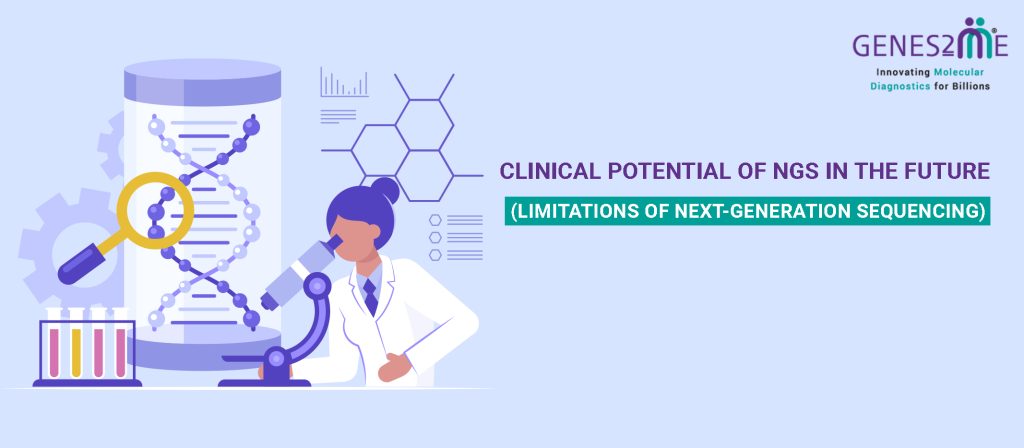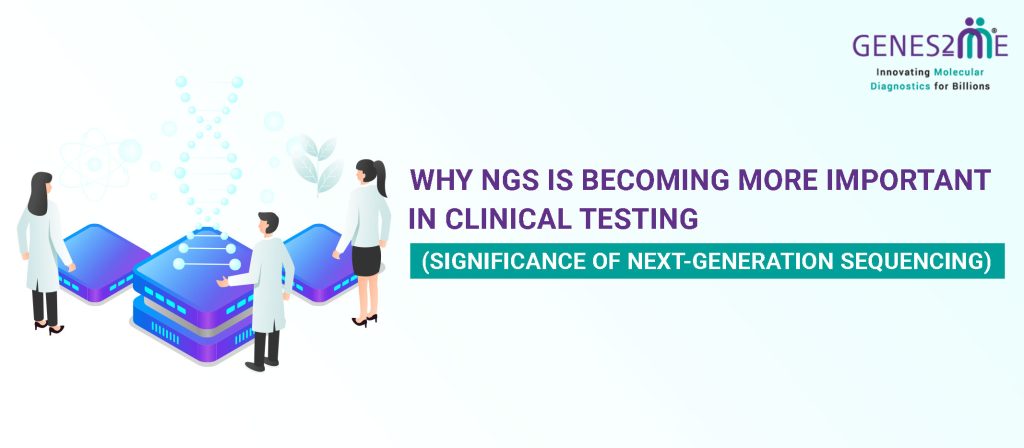Why NGS is becoming more important in clinical testing

With next-generation sequencing (NGS), scientists and researchers are better equipped to comprehend the genetic processes that underlie disorders- whether related to women’s health, cancer, or other infectious diseases. More significantly, these developments have paved the way for enhanced diagnostics that will enable early intervention and treatment response monitoring, ensuring that patients receive the best medicines feasible. NGS is now generally considered as the most significant tool for detecting genetic variations (SNP) for different diseases and syndromes.
Significance of next-generation sequencing
It is now generally acknowledged to be the most effective method for detecting rare genetic variations in illness.
- The ability to query a large number of targets at once hundreds of thousands or perhaps millions of targets is one of the benefits of NGS. It has a lot of potential for application in clinical diagnostics, and the capacity to quickly generate huge sequencing data reduces sequencing costs when compared to traditional labor-intensive diagnostic procedures.
- Multiple samples may be required for different experiments when there are many mutations related to various disorders. These targets can be questioned in a single test using NGS technology.
- It is appropriate for both rare and common, phenotypically and genetically diverse illnesses like epilepsy or intellectual handicap.
Clinical potential of NGS in the future

- Although the market share relative to rival technologies fluctuates, NGS is used in clinical practice in all five of the primary categories covered: reproductive health, cancer, Mendelian illnesses, complex diseases, and infectious diseases.
- As sequencing prices fall and gain more acclaim across disciplines, next-generation sequencing is anticipated to expand into more clinical arrays over the next several years.
- Additionally, there are several applications within these important fields where it is gaining traction and will become a standard technique in the upcoming years.
Cases that hold a lot of potential are the diversification of the reproductive health sector and liquid biopsies for early cancer diagnosis and surveillance.
Limitations of next-generation sequencing
- In clinical contexts, NGS encounters certain difficulties concerning the processing of DNA/RNA samples, library construction, and accurate interpretation of sequences. However, the Optimization of samples and library preparation techniques can lessen these difficulties.
- The fast examination of NGS data following the sequencing run is crucial for diagnostic purposes. The procedure could be difficult and take a while. But many kinds of bioinformatics tools have been created that may be used for sequence alignment to the reference genome, data processing, and accurate diagnosis.
Overall, NGS can offer a more complete picture of the disease in addition to numerous pieces of information that traditional detection approaches are unable to collect.
To Summate
New avenues for molecular diagnostics and tissue analysis are being made possible by NGS technology. The diagnostic pathologist is in the best position to evaluate the results in light of the clinical query since they work at the intersection of clinical and laboratory medicine. To utilize the therapeutic value of new technologies, pathologists must comprehend and adopt them.
Nevertheless, it will become an even more valuable and effective tool in the future if its limits would get well understood, and a major emphasis will be placed on creating standards for clinical diagnostics, systematic data gathering, and ethical concerns.
